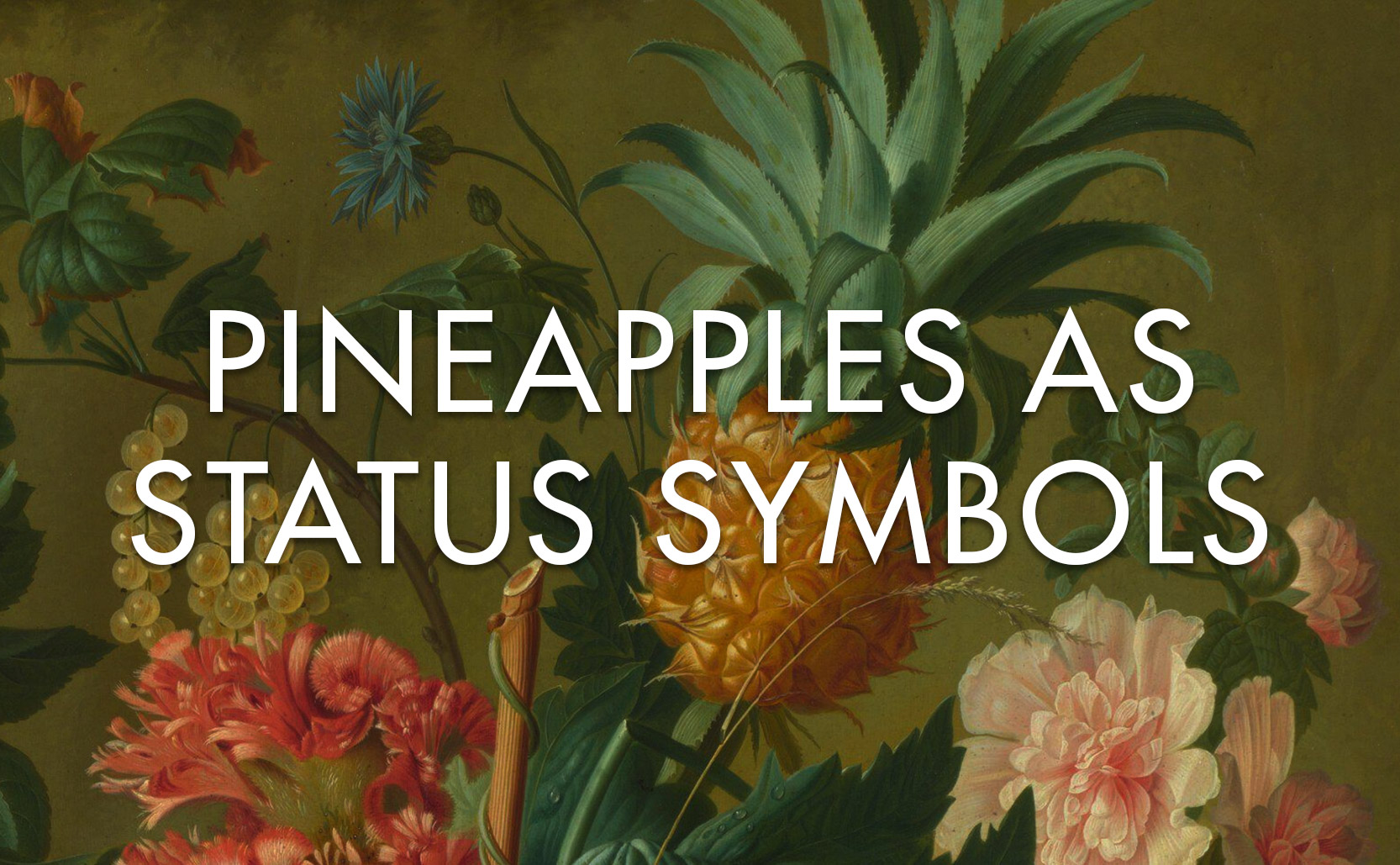Because of their rarity pineapples became European decorative elements and status symbols.
The pineapple is native to South America but across thousands of years of cultivation it spread to Central America as well. The first European to encounter a pineapple was Columbus in 1493 who brought some back to the Spanish royal court (along with tobacco, gold, chili peppers, and the people he kidnapped). Europeans had never tasted anything like pineapple before and, because of their scarcity, to own one quickly became an exotic status symbol of the ultra wealthy.
Pineapples were in high demand but there was low supply so enterprising individuals set out to grow pineapples in Europe. The tropical conditions pineapples require make growing them in Europe a challenge. It took until the 17th century for farmers in the Netherlands to succeed, followed by the English in the 18th century. Mathew Decker even memorialized his pineapple growing achievement by commissioning a painting in 1720. These efforts produced more, albeit still not many, pineapples for the European & American markets. A single pineapple could go for around $8,000 in today’s dollars. A cheaper alternative was to rent a pineapple which people would do to show off at parties and such. These pineapples would be rented from person to person until the final person paid to eat it, unless it had rotted by then. A further down-market option was pineapple jam which could be shipped from Central/South America.

Pineapple Art
The Caribbean custom of placing pineapples at the front of a friendly home as a welcome to strangers, combined with years of being displayed at happy European social gatherings, led pineapples to becoming international symbols of hospitality. This combined with their association to wealth & high society helped make the pineapple a popular artistic motif. From this we get carved pineapple embellishments as finials on staircases, at the tops of columns, on New England gateposts, above front doors, as fountains, as furniture accents, Christopher Wren placed gilded copper pineapples on St. Paul’s Cathedral in London, the centerpiece of the Dunmore Pineapple folly in Scotland is a massive pineapple, etc.
Added info: any association of pineapple with Hawaii comes after the fruit was introduced there by the Spanish in the 18th century. Pineapple is not native to Hawaii.





